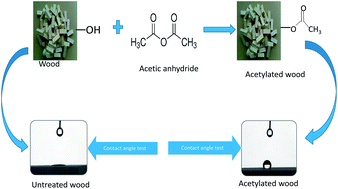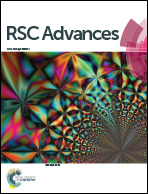Morphological and interfacial properties of chemically-modified tropical hardwood
Abstract
Chemical modification of wood with acetic anhydride is an environmentally friendly process to sustain and improve wood properties over a longer term than naturally allowed. Such an approach offers many potential and attractive product avenues for the wood industry. In this study, obeche tropical hardwood (Triplochiton scleroxylon) was acetylated with acetic anhydride to improve its mechanical and interfacial properties relative to unmodified wood; specifically, dimensional stability in terms of anti-swelling efficiency (ASE), water repellent efficiency (WRE), and hydrophobicity were the target properties of interest. The chemical modification was carried out at 120 °C with five varying reaction times (1–5 h) to optimize the reaction based on weight percent gain (WPG). It was found that as the reaction time increased, the WGP and hydrophobicity increased, but the percentage of water absorption and volumetric swelling diminished. In total, acetylation provided the hardwood with good dimensional stability. The chemically-modified wood was characterized by Fourier transform-infrared (FT-IR), dynamic contact angle, and an Owens–Wendt surface energy analysis.


 Please wait while we load your content...
Please wait while we load your content...